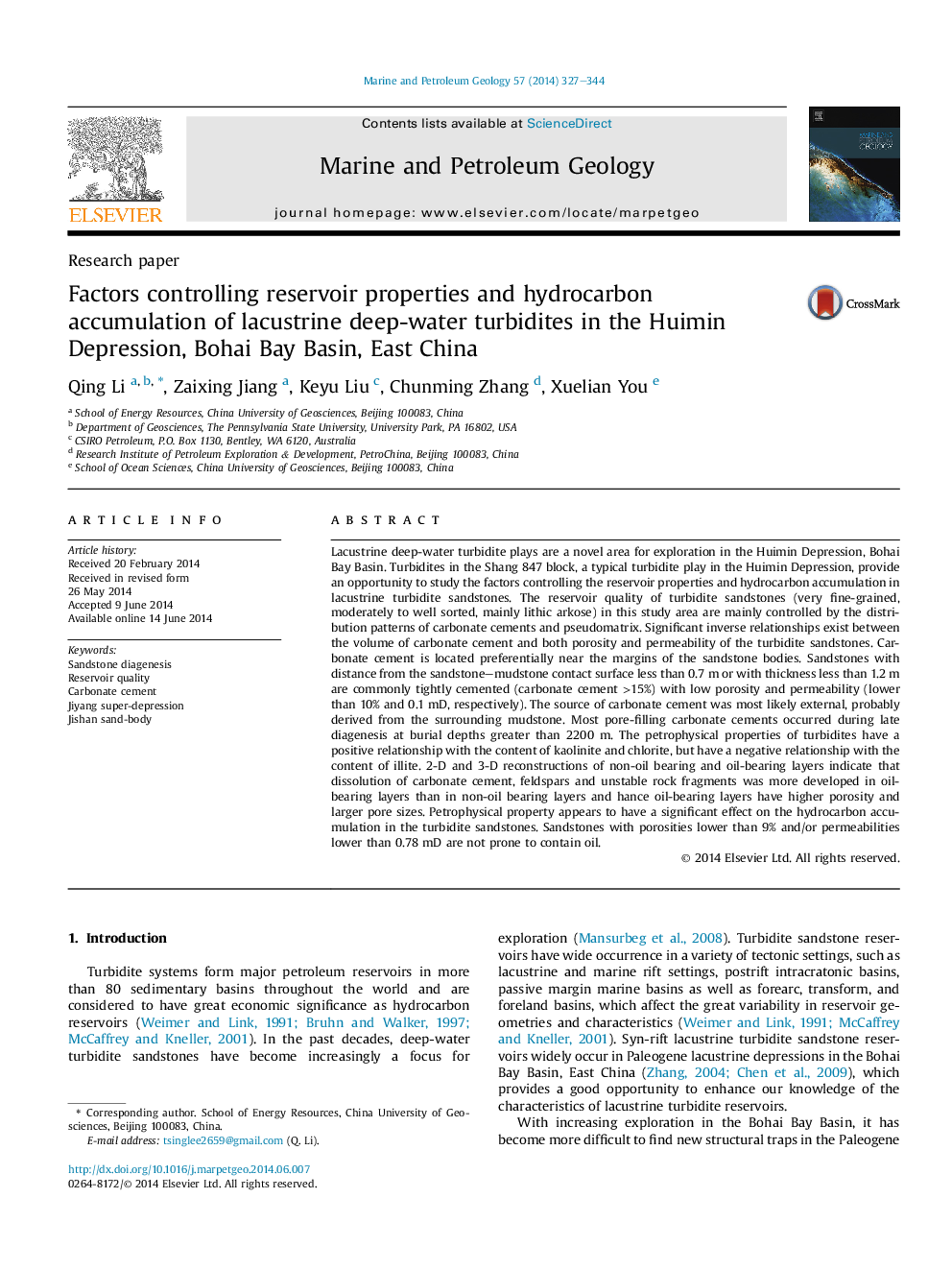| کد مقاله | کد نشریه | سال انتشار | مقاله انگلیسی | نسخه تمام متن |
|---|---|---|---|---|
| 6435360 | 1637167 | 2014 | 18 صفحه PDF | دانلود رایگان |

- Carbonate cements and pseudomatrix are main factors controlling reservoir quality.
- Carbonate cement commonly precipitated along the sandstone-mudstone contacts.
- Thin turbidite units (<1.2Â m) are pervasively cemented.
- Petrophysical properties have a significant effect on hydrocarbon accumulation.
- Porosity of 9% is the lower limits of effective reservoirs in the study area.
Lacustrine deep-water turbidite plays are a novel area for exploration in the Huimin Depression, Bohai Bay Basin. Turbidites in the Shang 847 block, a typical turbidite play in the Huimin Depression, provide an opportunity to study the factors controlling the reservoir properties and hydrocarbon accumulation in lacustrine turbidite sandstones. The reservoir quality of turbidite sandstones (very fine-grained, moderately to well sorted, mainly lithic arkose) in this study area are mainly controlled by the distribution patterns of carbonate cements and pseudomatrix. Significant inverse relationships exist between the volume of carbonate cement and both porosity and permeability of the turbidite sandstones. Carbonate cement is located preferentially near the margins of the sandstone bodies. Sandstones with distance from the sandstone-mudstone contact surface less than 0.7Â m or with thickness less than 1.2Â m are commonly tightly cemented (carbonate cement >15%) with low porosity and permeability (lower than 10% and 0.1Â mD, respectively). The source of carbonate cement was most likely external, probably derived from the surrounding mudstone. Most pore-filling carbonate cements occurred during late diagenesis at burial depths greater than 2200Â m. The petrophysical properties of turbidites have a positive relationship with the content of kaolinite and chlorite, but have a negative relationship with the content of illite. 2-D and 3-D reconstructions of non-oil bearing and oil-bearing layers indicate that dissolution of carbonate cement, feldspars and unstable rock fragments was more developed in oil-bearing layers than in non-oil bearing layers and hance oil-bearing layers have higher porosity and larger pore sizes. Petrophysical property appears to have a significant effect on the hydrocarbon accumulation in the turbidite sandstones. Sandstones with porosities lower than 9% and/or permeabilities lower than 0.78Â mD are not prone to contain oil.
Journal: Marine and Petroleum Geology - Volume 57, November 2014, Pages 327-344